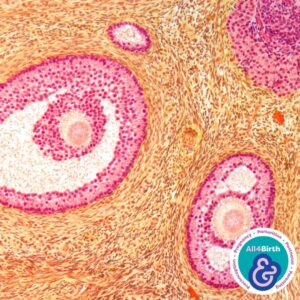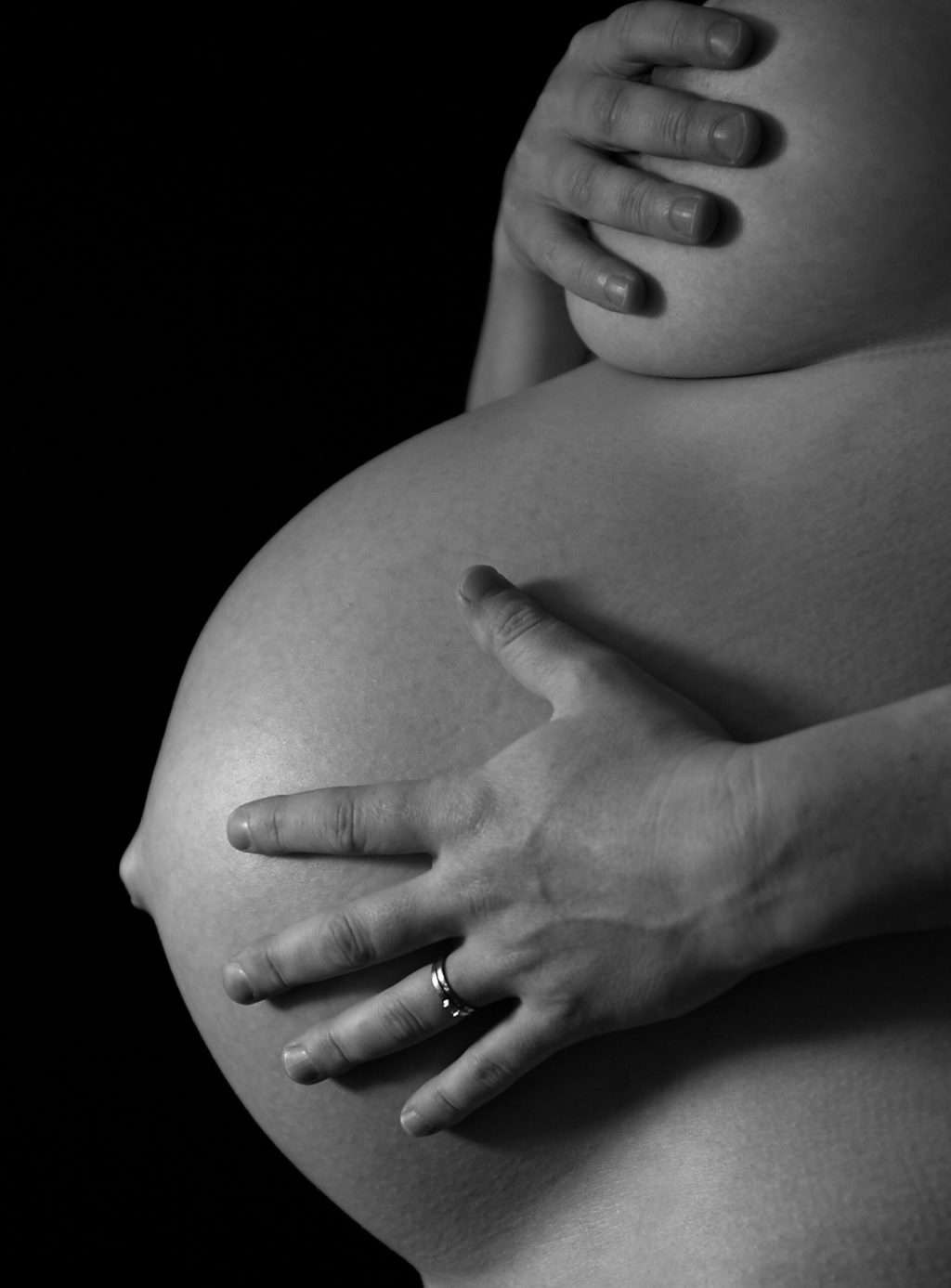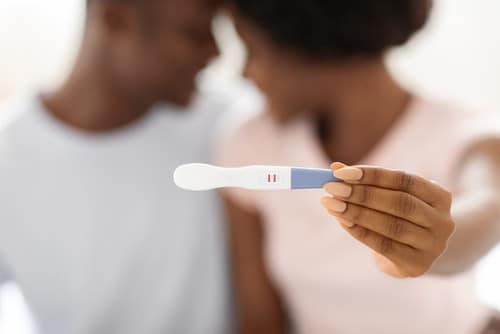Embracing the Glow: Navigating the Physiological Changes of the Second Trimester
Abbie Tomson
Midwife MSc, BSc, Yoga Teacher, Project Lead at All4Birth
@enevlorel
As the first trimester gives way to the second, the pregnancy journey unfolds with a new set of physiological changes and experiences. The second trimester, spanning weeks 13 to 27, is often heralded as the “golden period” of pregnancy, marked by a reduction in some early symptoms and the emergence of new, exciting developments. This post will explore the intricate physiological changes during this phase and shed light on the associated signs and symptoms.
Embracing the Glow: Navigating the Physiological Changes of the Second Trimester
Fading NVP
- Hormonal Changes: By the second trimester, hormonal levels tend to stabilise and often decrease slightly. As a result, the intensity of NVP symptoms may diminish.
- Placental Development: The placenta, which forms and matures throughout the first trimester, takes over the production of hormones from the corpus luteum. As the placenta becomes fully functional, hormonal fluctuations become more regulated, reducing NVP symptoms for many women.
- Decreased Sensitivity: Some pregnant women experience decreased sensitivity to certain smells, tastes, and textures as they progress into the second trimester. This reduced sensitivity may contribute to a decrease in NVP episodes.
- Gastric Emptying and Digestive Changes: During pregnancy, gastric emptying may slow down due to hormonal influences and changes in gastrointestinal motility. This slowed gastric emptying can contribute to feelings of nausea and discomfort, particularly in the first trimester. However, gastric emptying improves as pregnancy progresses, reducing NVP symptoms.
- Psychological Factors: Women may experience psychological relief and reduced stress as they pass through the first trimester and enter the second trimester, often referred to as the “honeymoon phase” of pregnancy. This decrease in stress levels may contribute to a reduction in NVP symptoms.
- Persistent Symptoms: Despite these physiological changes, some women may continue to experience NVP into the second trimester or throughout pregnancy. Factors such as individual differences in hormone sensitivity, genetic predisposition, and overall health may influence the persistence of symptoms. For a small percentage of pregnant women, NVP may even worsen in the second trimester or persist throughout pregnancy, a condition known as hyperemesis gravidarum, which may require medical intervention and management.
Energy Surge and the Pregnancy Glow
- Hormonal Changes: Oestrogen and progesterone levels remain elevated but tend to plateau. The relative hormonal stability and the body’s adaptation to the hormonal changes can contribute to increased energy levels and a sense of well-being.
- Decreased Nausea and Fatigue: Many women find that the symptoms of NVP and fatigue, common during the first trimester, diminish as they enter the second trimester. Reduced nausea and fatigue allow for improved sleep quality and overall energy levels.
- Improved Blood Circulation: As the pregnancy progresses, the body increases blood volume to support the needs of the developing fetus and placenta. This increased blood circulation can lead to better oxygen and nutrient delivery to various organs and tissues, including muscles and skin, contributing to increased vitality and a healthy complexion.
- Decreased Stress Levels: For some women, the second trimester brings a sense of emotional relief and reduced stress compared to the uncertainties and physical discomforts of the first trimester. This decrease in stress levels can positively impact energy levels and overall well-being.
- Increased Appetite and Nutrition: As nausea and food aversions typically subside in the second trimester, many women experience an increase in appetite and are better able to tolerate a wider variety of foods. Improved nutrition and calorie intake can provide the body with the energy it needs to support the demands of pregnancy.
- Skin Changes: The “pregnancy glow” is often attributed to changes in the skin that occur during pregnancy. Increased blood flow and hormonal changes can enhance skin hydration, oil production, and blood vessel dilation, giving the skin a radiant appearance. Additionally, the pigment-producing cells in the skin, called melanocytes, may become more active during pregnancy, leading to changes in skin pigmentation, such as darkening of the nipples, areolas, and a dark line (linea nigra) that may appear on the abdomen.
Linea Nigra and Skin Changes
- Hormonal Influence: Hormonal changes, particularly increased levels of estrogen and progesterone, play a significant role in skin pigmentation during pregnancy. These hormones can stimulate the activity of melanocytes, the pigment-producing cells in the skin, leading to increased melanin production. Oestrogen, in particular, can directly stimulate melanocytes, leading to hyperpigmentation in various body areas.
- Melanin Production: Melanin is the pigment responsible for determining skin colour. During pregnancy, increased hormonal activity can stimulate melanocytes to produce more melanin. This increased melanin production can darken certain skin areas, including the abdomen, nipples, areolas, face, and genitals. The Linea Nigra, which is a dark line that runs vertically down the abdomen from the umbilicus (belly button) to the pubic bone, is caused by increased melanin production in the skin along the linea alba (the line of connective tissue in the abdomen). This darkening is more pronounced in women with darker skin tones.
- Increased Blood Flow: During pregnancy, the body experiences increased blood volume and circulation to support the needs of the developing fetus and placenta. This increased blood flow can contribute to skin changes by providing additional nutrients and oxygen to the skin cells.
- Sun Exposure: Sun exposure can exacerbate skin changes during pregnancy. Ultraviolet (UV) radiation from the sun can stimulate melanocytes and increase melanin production, leading to darker pigmentation in areas exposed to sunlight. Pregnant women need to practice sun protection, such as wearing sunscreen and protective clothing, to minimize the risk of developing dark spots or worsening existing skin pigmentation.
- Genetic Factors: Genetic predisposition may also play a role in determining the extent and severity of skin changes during pregnancy. Women with a family history of hyperpigmentation or those with darker skin tones may be more prone to developing Linea Nigra and other skin pigment changes.
Increased Blood Volume and Circulatory Adjustments
- Increased Blood Volume: The body begins to increase its blood volume early in pregnancy to meet the demands of the growing fetus and placenta. By the second trimester, blood volume typically increases by about 40-50% compared to pre-pregnancy levels. The increased blood volume ensures an adequate supply of oxygen, nutrients, and hormones to the developing fetus while supporting the mother’s increased metabolic needs. This increased blood volume is primarily due to hormonal influences, particularly estrogen and progesterone, which stimulate the production of red blood cells and cause blood vessels to dilate.
- Red Blood Cell Production: Hormonal changes, particularly increased erythropoietin (EPO) and other factors, stimulate the bone marrow to produce more red blood cells. This increase in red blood cell production helps to accommodate the expanded blood volume and maintain adequate oxygen-carrying capacity. However, while red blood cell production increases, plasma volume increases faster, leading to a slight dilution of the blood and a decrease in hematocrit (percentage of red blood cells in the blood), a normal physiological adaptation to pregnancy.
- Adjustments in Circulation: To accommodate the increased blood volume and support the needs of the developing fetus, the circulatory system undergoes several adjustments during pregnancy. The heart enlarges slightly to accommodate the increased blood volume and maintain cardiac output. The left ventricle, in particular, experiences hypertrophy (enlargement) to pump blood more efficiently. Blood vessels, including arteries and veins, dilate to reduce peripheral resistance and increase blood flow to the placenta and other maternal organs. Blood flow to the kidneys also increases to support increased renal function and filtration, which helps to eliminate waste products and maintain fluid and electrolyte balance.
- Venous Return and Blood Pressure: As the uterus grows and expands, it can pressure the inferior vena cava, the large vein that returns blood to the heart from the lower body. This pressure can sometimes decrease venous return and cause a slight drop in blood pressure, especially when lying on the back. To counteract this, pregnant women are often advised to avoid lying flat on their backs for extended periods, particularly in the later stages of pregnancy, to maintain optimal blood flow to the heart and prevent supine hypotension syndrome.
Conclusion
The second trimester of pregnancy is a period of transformation, bringing about a delightful balance between the challenges of early pregnancy and the anticipation of the impending arrival. As your body adapts, relish in the newfound energy and the visible signs of life growing within. Always consult your healthcare provider for personalized guidance, ensuring a smooth and healthy journey for you and your baby.
Links to resources
 Books
Books
Brain Health from Birth: Nurturing Brain Development During Pregnancy and the First Year by Rebecca Fett
Real Food for Pregnancy by Lily Nichols
 Film Audio and Apps
Film Audio and Apps
Baby Buddy app, created by the Best Beginnings Charity
 Websites
Websites
References
- Coad, J. (2019). Anatomy and Physiology for Midwives. Elsevier.
- Marshall, J. E., & Raynor, M. D. (2019). Myles Textbook for Midwives. Elsevier.
- Tossetta G. (2023). Physiology and Pathophysiology of the Placenta. International journal of molecular sciences, 24(10), 9066. https://doi.org/10.3390/ijms24109066
- Pascual ZN, Langaker MD. Physiology, Pregnancy. [Updated 2023 May 16]. In: StatPearls [Internet]. Treasure Island (FL): StatPearls Publishing; 2024 Jan-. Available from: https://www.ncbi.nlm.nih.gov/books/NBK559304.














